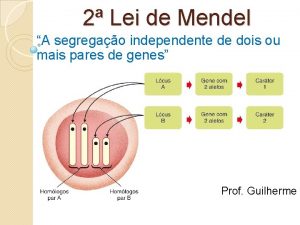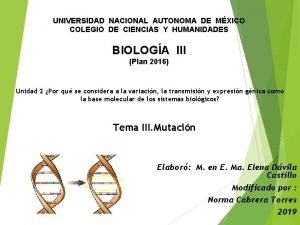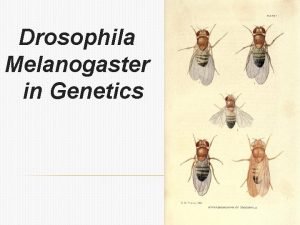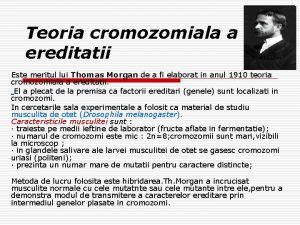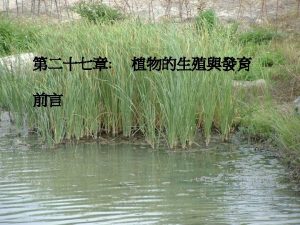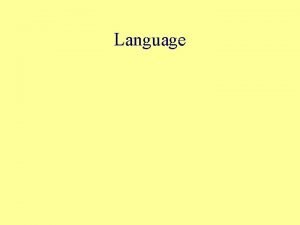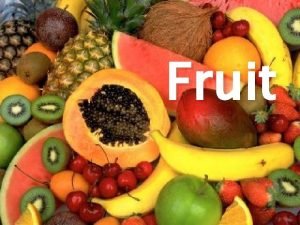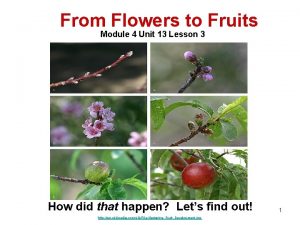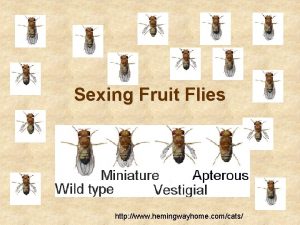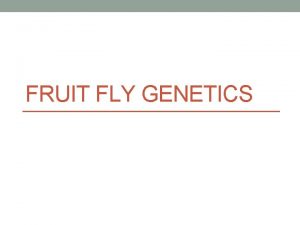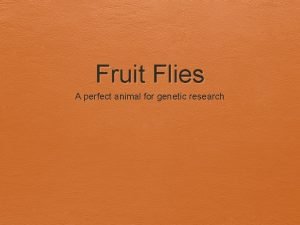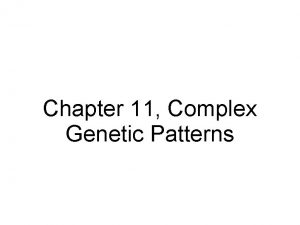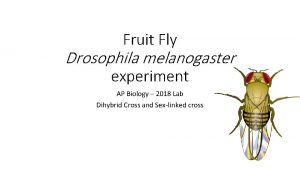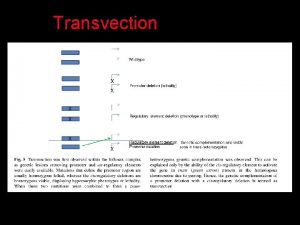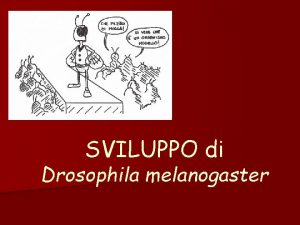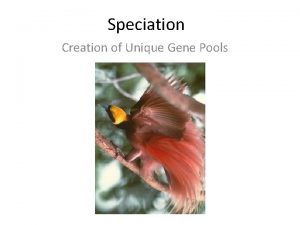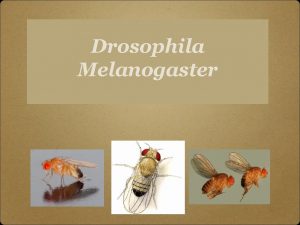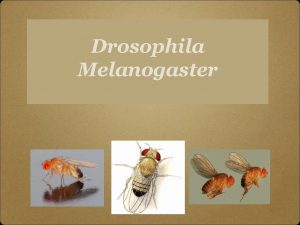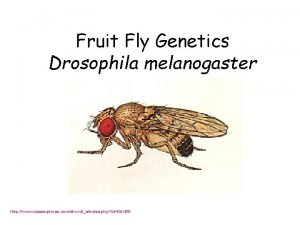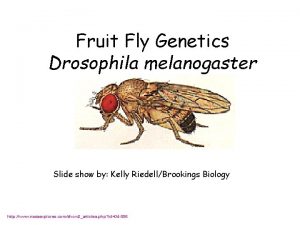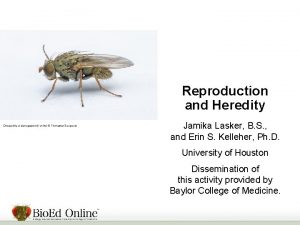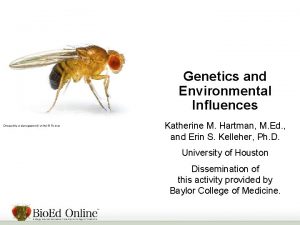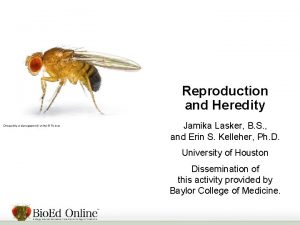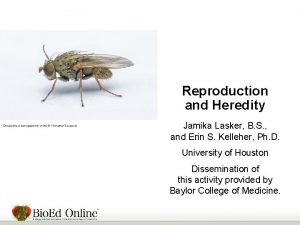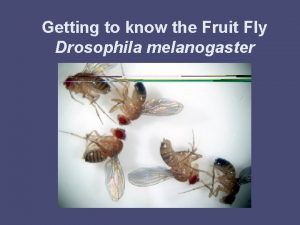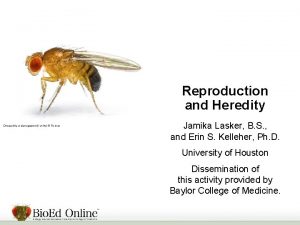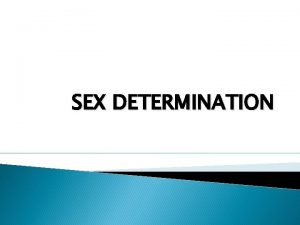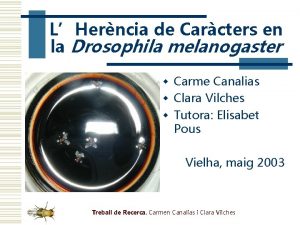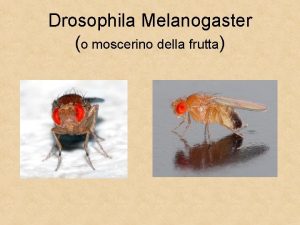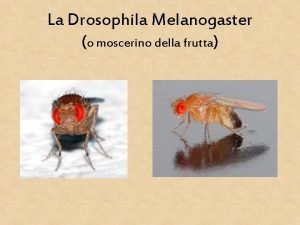Drosophila Why Fruit Flies Fruit Flies Drosophila melanogaster



















- Slides: 19

Drosophila

Why Fruit Flies? • Fruit Flies (Drosophila melanogaster) have been used to study genetics for the past 90 years. • Why? • 50% of their genes are the same as humans • Complex genetic systems (similar to ours) • Short life cycle • Reliable reproducers • Several mutations which can be used to study the inheritance of mutated genes.

How do we observe fruit flies? They are very small so we need to use a microscope:

But we need to put them to sleep first: The Fly nap will keep the flies Anaesthetised for Approximately 45 minutes

Breeding Fruit Flies In order to breed fruit flies, we need to be able to tell which sex they are. Male Female

Which one’s which?

Setting up a breeding tube: 1. Add food medium to the tube and moisten 2. Add a ‘ladder’ or other matrix for the flies to climb (and breed) on. 3. Insert a foam bung to seal the tube but still allow air in/out.

• http: //www. youtube. com/watch? v=z. XXq. Q 2 z. J VMA

Drosophila Life Cycle

Larva: Pupa:

• http: //www. youtube. com/watch? v=Dki. CFk. B 9 c. So

Wild type Drosophila A ‘normal’ (not mutated) drosophila fly is referred to as a ‘’Wildtype’’ and has the following traits: Non-Ebony (Brown) body Normal Length wings Red Eyes

Drosophila Mutations 1. Ebony Body These Flies have a much darker (almost black) body. When writing the Genotype, We denote it as Eb The normal ‘wildtype’ version is written Eb+

2. Vestigial Wings Some Drosophila have the gene mutation which means the wings don’t form properly (vestigial) When writing the genotype, we denote it as Vg (or Vg+)

3. White Eyes Some flies have a mutation which causes their eyes to be white instead of red. This mutation is carried on the X chromosome so The mode of inheritance called X-Linked or Sex-Linked

• http: //www. youtube. com/watch? v=UL 4 A 0 g. K u. Zo. I

Vg. Eb Inheritance. Vg = Vestigial Wings Vg+ = Non vestigial Eb = Ebony body Eb+ = Non ebony For each genotype, write the phenotype. Vgvgebeb vg+vg+eb+eb+ vgvg+ebeb Vgvg+ebeb+ vgvgeb+eb+

Answers: 1) Vgvgebeb Vestigial wings, ebony body 2) vg+vg+eb+eb+ Non-Vesitigal Non-Ebony 3) vgvg+ebeb Non-vesitigial, Ebony body 4) Vgvg+ebeb+ Non-Vesitigial, Non-Ebony 5) vgvgeb+eb+ Vesitigial Wings, Non-Ebony body

Now try constructing a Punnett square: Using the template on the worksheet, and your knowledge of dihybrid inheritance, fill in the cross for the F 1 and F 2 generation.
 Em drosophila melanogaster asa vestigial curta
Em drosophila melanogaster asa vestigial curta Mutaciones en drosophila melanogaster
Mutaciones en drosophila melanogaster Drosophila melanogaster
Drosophila melanogaster Musculite in ochi
Musculite in ochi Microspore megaspore
Microspore megaspore Time flies like arrow fruit flies like banana
Time flies like arrow fruit flies like banana Hey hey bye bye
Hey hey bye bye Fruits and vegetables meaning
Fruits and vegetables meaning Fruit parts
Fruit parts Lecture about flowers
Lecture about flowers Sexing fruit flies
Sexing fruit flies Difference between male and female drosophila
Difference between male and female drosophila Sexing fruit flies
Sexing fruit flies Dominant vs recessive genetic disorders
Dominant vs recessive genetic disorders Amazon
Amazon Fruit flies
Fruit flies Dont ask why why why
Dont ask why why why Hox gene mutation in drosophila
Hox gene mutation in drosophila Acron e telson
Acron e telson Hox gene mutation in drosophila
Hox gene mutation in drosophila
